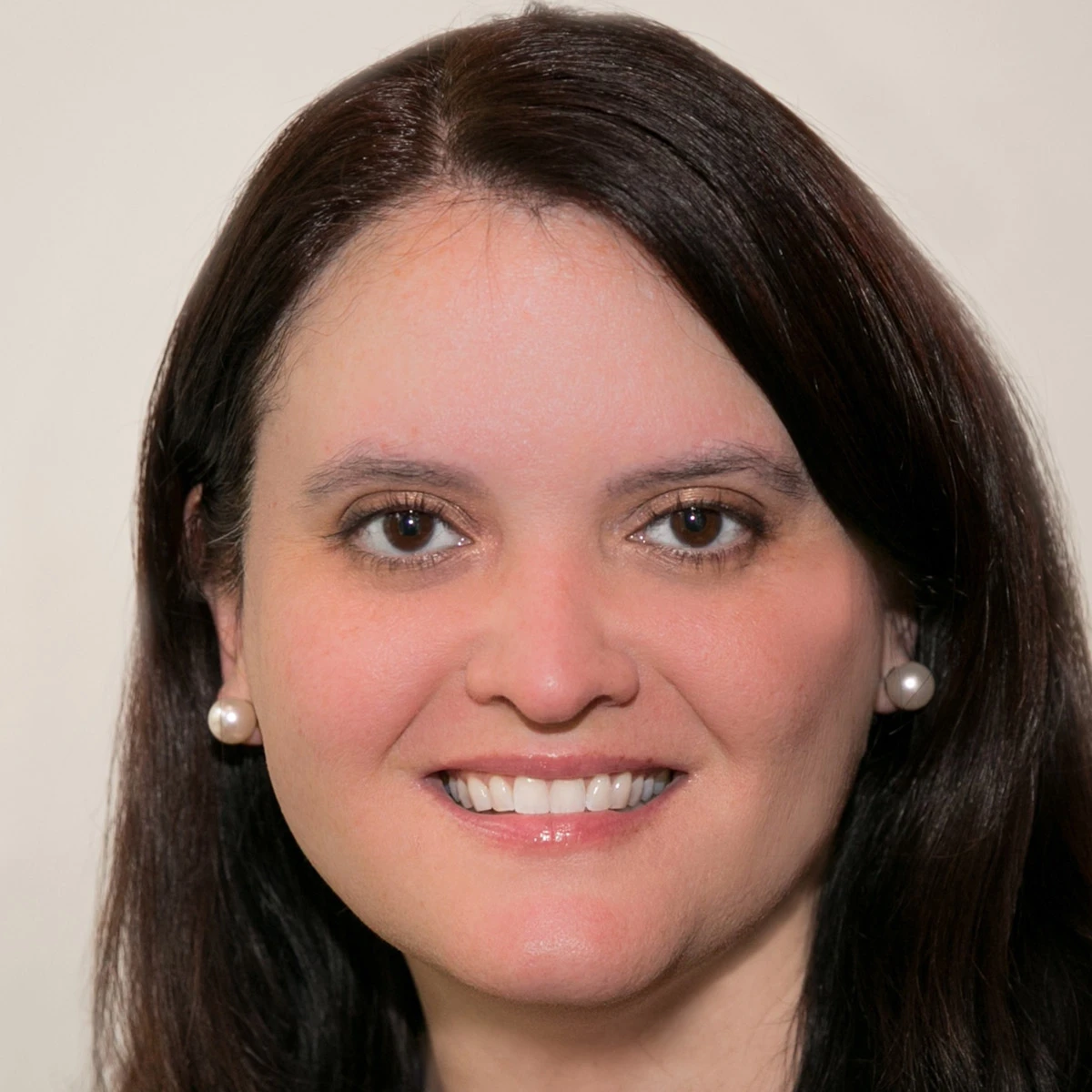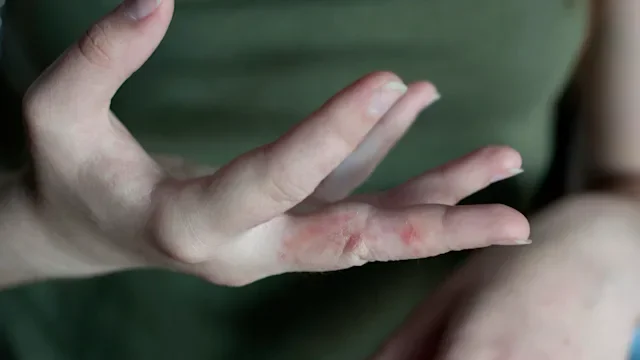Key takeaways:
Scalp eczema looks like a red or brown rash that’s flaky and itchy. Several different conditions can cause it.
Seborrheic dermatitis is the most common cause of scalp eczema. In its mildest form, it’s called dandruff. It can usually be treated with medicated shampoos that you can buy over the counter.
Avoiding triggers, reducing stress, and using moisturizers may help prevent flare-ups.
If you have a dry, itchy, or flaky scalp, you may have scalp eczema. This common condition has a few different causes. But no matter the cause, the symptoms are the same — unwanted scalp flaking and an itchy rash.
Other rashes, like scalp psoriasis and scalp ringworm, can look a lot like eczema. That’s why it’s important to get the right diagnosis before starting treatment. Here, we’ll take a look at the different causes of scalp eczema and the best treatment approach for each.
What is scalp eczema?
Scalp eczema (also called scalp dermatitis) is a general term that means inflammation of the scalp skin. Its symptoms can range from mild to a truly uncomfortable nuisance. But whatever your symptoms, treatments are available and effective — as long as you get the diagnosis right.
Types of scalp eczema
Many different types of eczema can affect your scalp. They may have similar symptoms, like flaking and itching, but they have different causes and treatments.
Seborrheic dermatitis (dandruff)
Seborrheic dermatitis is one of the most common types of scalp eczema, and it affects people of all ages. In babies you may know it as “cradle cap,” defined by thick, greasy patches on the scalp that are red or yellow.
In adults, mild seborrheic dermatitis is called dandruff. When it’s more severe, it causes itchy, flaky patches on the scalp and around the hairline. These patches can be red, brown, or light in color. Severe seborrheic dermatitis can also cause a similar rash on other oily areas, like eyebrows, chest, beard area, and around the nose and ears.


Atopic eczema (atopic dermatitis)
Atopic eczema, also called atopic dermatitis, is a common chronic skin condition. About 3 in 10 people in the U.S. have it, and most people just call it “eczema.” Anyone can get this type, but it’s more common in children and teens and often runs in families.
Atopic eczema usually causes an itchy rash in the folds of your skin, like your inner arms, neck, and back of your knees. It can also affect your scalp, which can look a lot like dandruff. This type of scalp eczema is more common in infants and toddlers than in adults, which can help get the diagnosis right.
Atopic eczema also looks different from seborrheic dermatitis. Unlike the greasy, yellowish flakes of dandruff, eczema usually causes scaly patches of pink, red, or brown skin. It’s often pretty itchy. And constant scratching can lead to thick and leathery skin.
Psoriasis vs. eczema: Here’s how to tell the difference between these two common conditions, with pictures.
Living with eczema: Read how one woman managed her severe eczema flares and got her symptoms under control.
Natural remedies for eczema: From shea butter to probiotics, learn how one woman uses natural treatments to clear her eczema.

Contact dermatitis (allergic or irritant dermatitis)
Contact dermatitis is a type of eczema that happens when your skin reacts to something it touches. This can be an allergic reaction, like to poison ivy, nickel, or a preservative in your lotion. It can be caused by irritation from harsh soaps or chemicals on your skin.
Contact dermatitis causes an itchy rash. It can appear anywhere your skin touches an allergen or irritant, including your scalp.
If a shampoo or other hair product causes the reaction, the rash usually affects your whole scalp, including around your hairline. On lighter skin tones, the rash can look red or pink. On darker skin tones, it can cause light-colored or brown patches. Your symptoms and rash should clear after you stop coming into contact with whatever is causing the reaction.
Read more like this
Explore these related articles, suggested for readers like you.

What causes scalp eczema?
The causes of scalp eczema depend on the type of eczema.
For the most common type, seborrheic dermatitis, the cause isn’t exactly clear. It seems that skin oil (sebum) production and certain skin yeasts likely play a role in why some people get seborrheic dermatitis while others don’t.
The cause of atopic eczema isn’t entirely clear either. It’s likely linked to an intense immune reaction that leads to skin inflammation. There are many factors that increase your risk of atopic eczema, whether on your skin or scalp.
These include:
Genetic factors
Environmental factors like climate, diet, and pollutants
Finally, contact dermatitis is caused by an allergy or reaction to an irritant. Common culprits include harsh or harmful skin products, poison ivy, and nickel.
What are the symptoms of scalp eczema?
All types of scalp eczema can cause an inflamed, itchy, and flaky scalp. You may even be able to feel changes in your scalp with your fingers. Look for roughness, scaly skin, or bumps.
With dandruff or seborrheic dermatitis, you may also notice:
Large, oily flakes coming off your scalp
Patches of oily or waxy skin
Yellow or pink patches around your hairline (in fair skin)
Darker or lighter patches around your hairline (in darker skin)
Oily patches or flaking around your nose or beard area
Flaking or oily skin in your ears
For some people, scalp eczema can be mild and barely noticeable. For others, symptoms can be intense and affect quality of life. In some cases, severe scalp itching and scratching can cause a skin infection. These infections aren’t usually serious but can be uncomfortable and may need treatment with an antibiotic cream or pills.
Get medical attention if you develop a fever or notice a change in the appearance of your scalp rash, like oozing, crusting, or pain.
Scalp eczema treatments and medications
The best treatment for scalp eczema depends on the type and how severe it is. For mild symptoms, over-the-counter (OTC) treatments may be enough. But if symptoms are more severe — or don’t improve with OTC medications — prescription-strength treatments may be needed.
Here are some common treatments for seborrheic dermatitis and other types of scalp eczema.
OTC shampoos for eczema
Dandruff is the mildest (and most common) form of seborrheic dermatitis. You can usually treat it with OTC medicated shampoos that get rid of flaking. Depending on your symptoms, you may use these shampoos daily or a few times a week. Once your symptoms improve, use them once every week or two to prevent a relapse.
Look for scalp eczema shampoos with one or more of these ingredients:
Pyrithione zinc (like Head & Shoulders and DermaZinc)
Selenium sulfide (like Selsun Blue and Head & Shoulders Clinical Strength)
Ketoconazole (like Nizoral)
Tar (like Medicasp Coal Tar Gel and DHS Tar)
Salicylic acid (like Neutrogena T/Sal and DHS Sal)
Prescription medications for scalp eczema
Here’s a closer look at prescription medications for different types of scalp eczema. A healthcare professional can explain the risks and benefits of each option and help develop a treatment plan that works for you.
Seborrheic dermatitis
More serious seborrheic dermatitis may need prescription treatments. The following medications come in different scalp-friendly forms, like shampoos, foams, and liquids:
Topical steroids like Clobex and Capex, help soothe inflammation.
Antifungals like ciclopirox or prescription-strength ketoconazole help treat yeast overgrowth. An antifungal pill may be needed if your symptoms are severe or aren’t responding to other treatments.
Calcineurin inhibitors, like tacrolimus (Protopic) and pimecrolimus (Elidel) can be used “off-label” to help lessen inflammation.
Atopic dermatitis
Treatment for scalp eczema caused by atopic dermatitis depends on how severe it is. For mild to moderate eczema, these products can help reduce inflammation and improve symptoms:
Topical steroids (shampoo, foam, or liquid)
Calcineurin inhibitors (Elidel or Protopic)
Eucrisa (crisaborole)
Antihistamines (like fexofenadine (Allegra))
More severe scalp eczema may need stronger treatments that work throughout your body. This includes different pills (like prednisone and Rinvoq) or shots (like Adbry and Dupixent).
Contact dermatitis
If your eczema is caused by an irritation or allergic reaction to a product, avoiding that product will improve your symptoms and your rash. A healthcare professional can help you figure out if you’re reacting to a product or if something else is going on.
Phototherapy (Excimer laser)
Phototherapy (light therapy) uses specific wavelengths of light to treat atopic dermatitis in a safe and controlled manner. For scalp eczema, a small handheld device called an excimer laser delivers ultraviolet B light to small, targeted areas. Treatments usually take place 2 or 3 times a week in a doctor’s office for a few months at a time. The excimer laser can be a good option for small patches that haven’t responded to other treatments.
Home remedies
Home remedies for scalp eczema work best when they’re paired with other proven treatments. Here are some options that may help control symptoms:
Mineral oil may help loosen and remove thickened skin. Apply to your scalp and let it sit for 20 minutes before washing off.
Colloidal oatmeal can lower inflammation and moisturize your skin. Use a premade hair mask or make your own, leaving it on for about 30 minutes before washing.
Apple cider vinegar can have some health benefits, but it may irritate the scalp in some people. Try mixing 2 tbsp of apple cider vinegar with 12 oz of water, apply to your scalp for 2 to 3 minutes, then rinse.
Tea tree oil is an essential oil that may improve an itchy scalp. Use premade tea tree hair products or dilute it in an oil before applying to your scalp.
What triggers scalp eczema?
Different triggers can make scalp eczema worse. If you’re dealing with seborrheic dermatitis or atopic eczema of the scalp, you can help keep your symptoms at bay by avoiding some common triggers, including:
Keep in mind that you can’t avoid every trigger. For example, seasonal weather changes can trigger symptoms for some people. Certain medical conditions, like HIV or Parkinson’s disease, can also trigger seborrheic dermatitis.
How to prevent scalp eczema flare-ups
No matter what type of scalp eczema you have, here are some tips to avoid flare-ups:
Keep your hair and scalp clean.
Avoid harsh soaps and detergents.
Use fragrance-free shampoo and avoid conditioners.
Moisturize your skin and scalp — lotions, gels, and spray-on emollients work best.
Avoid using olive oil, as it can damage the skin barrier.
Use the cool setting on your hair dryer.
Take steps to minimize stress as much as possible.
Frequently asked questions
Yes. Severe eczema can sometimes lead to temporary hair loss. When the scalp gets really inflamed in eczema, it can prevent hair from growing. Fortunately, once eczema is treated, hair usually grows back.
Yes, it’s possible to dye your hair if you have scalp eczema. But you may need to take extra precautions. A common hair dye ingredient called p-phenylenediamine (PPD) can cause an allergic skin reaction and trigger eczema. Look for hair dyes without PPD and test a small area of your scalp to make sure you don’t react before dyeing your whole head.
Psoriasis is a chronic autoimmune skin condition that can affect your scalp and look like eczema. Similar to eczema, psoriasis can cause itchy and flaky skin that’s red or brown. But unlike eczema, psoriasis tends to cause plaques — thicker skin scales that can be harder to get rid of. If you have scalp psoriasis, you’re likely to have psoriasis elsewhere, too. It can sometimes be hard to tell the difference between eczema and psoriasis. You may need to see a specialist for help.

Yes. Severe eczema can sometimes lead to temporary hair loss. When the scalp gets really inflamed in eczema, it can prevent hair from growing. Fortunately, once eczema is treated, hair usually grows back.
Yes, it’s possible to dye your hair if you have scalp eczema. But you may need to take extra precautions. A common hair dye ingredient called p-phenylenediamine (PPD) can cause an allergic skin reaction and trigger eczema. Look for hair dyes without PPD and test a small area of your scalp to make sure you don’t react before dyeing your whole head.
Psoriasis is a chronic autoimmune skin condition that can affect your scalp and look like eczema. Similar to eczema, psoriasis can cause itchy and flaky skin that’s red or brown. But unlike eczema, psoriasis tends to cause plaques — thicker skin scales that can be harder to get rid of. If you have scalp psoriasis, you’re likely to have psoriasis elsewhere, too. It can sometimes be hard to tell the difference between eczema and psoriasis. You may need to see a specialist for help.

The bottom line
Scalp eczema can be caused by a few different types of eczema. The most common is seborrheic dermatitis. In its mildest form, seborrheic dermatitis causes dandruff, which is easy to treat with medicated shampoos. Other types of scalp eczema can be harder to treat, especially if you don’t get the diagnosis right.
Allergies, skin irritation, and chronic skin conditions like psoriasis can all look similar to dandruff. But they all need different treatments. A primary care provider or dermatologist can help you get the diagnosis right if you’re struggling to manage your flaky and itchy scalp.

Why trust our experts?


Images used with permission from VisualDx (www.visualDx.com).
References
American Academy of Dermatology Association. (n.d.). Is that eczema or an infection on my child’s skin?
American Academy of Dermatology Association. (2023). Eczema types: Atopic dermatitis causes.
Boguniewicz, M., et al. (2011). Atopic dermatitis: A disease of altered skin barrier and immune dysregulation. Immunological Reviews.
Bonamonte, D., et al. (2019). The role of the environmental risk factors in the pathogenesis and clinical outcome of atopic dermatitis. BioMed Research International.
Borda, L. J., et al. (2015). Seborrheic dermatitis and dandruff: A comprehensive review. Journal of Clinical and Investigative Dermatology.
Gallagher, M. (2022). 5 lesser-known eczema triggers (and how to avoid them). National Eczema Association.
Johnson, B. A., et al. (2000). Treatment of seborrheic dermatitis. American Family Physician.
Ludmann, P. (2022). Seborrheic dermatitis: Overview.
National Eczema Society. (n.d.). Scalp eczema.
National Eczema Association. (2025). Phototherapy.
National Eczema Association. (2025). Seborrheic dermatitis.
National Institute of Allergy and Infectious Disease. (2024). Eczema (atopic dermatitis). National Institutes of Health.
Onselen, J. V. (n.d.). Haircare and eczema. National Eczema Society.
Park, B. G., et al. (2023). Preliminary clinical study of the effects and safety of 308-nm excimer light treatment in patients with atopic dermatitis. Annals of Dermatology.
Satchell, A. C., et al. (2002). Treatment of dandruff with 5% tea tree oil shampoo. Journal of the American Academy of Dermatology.


















